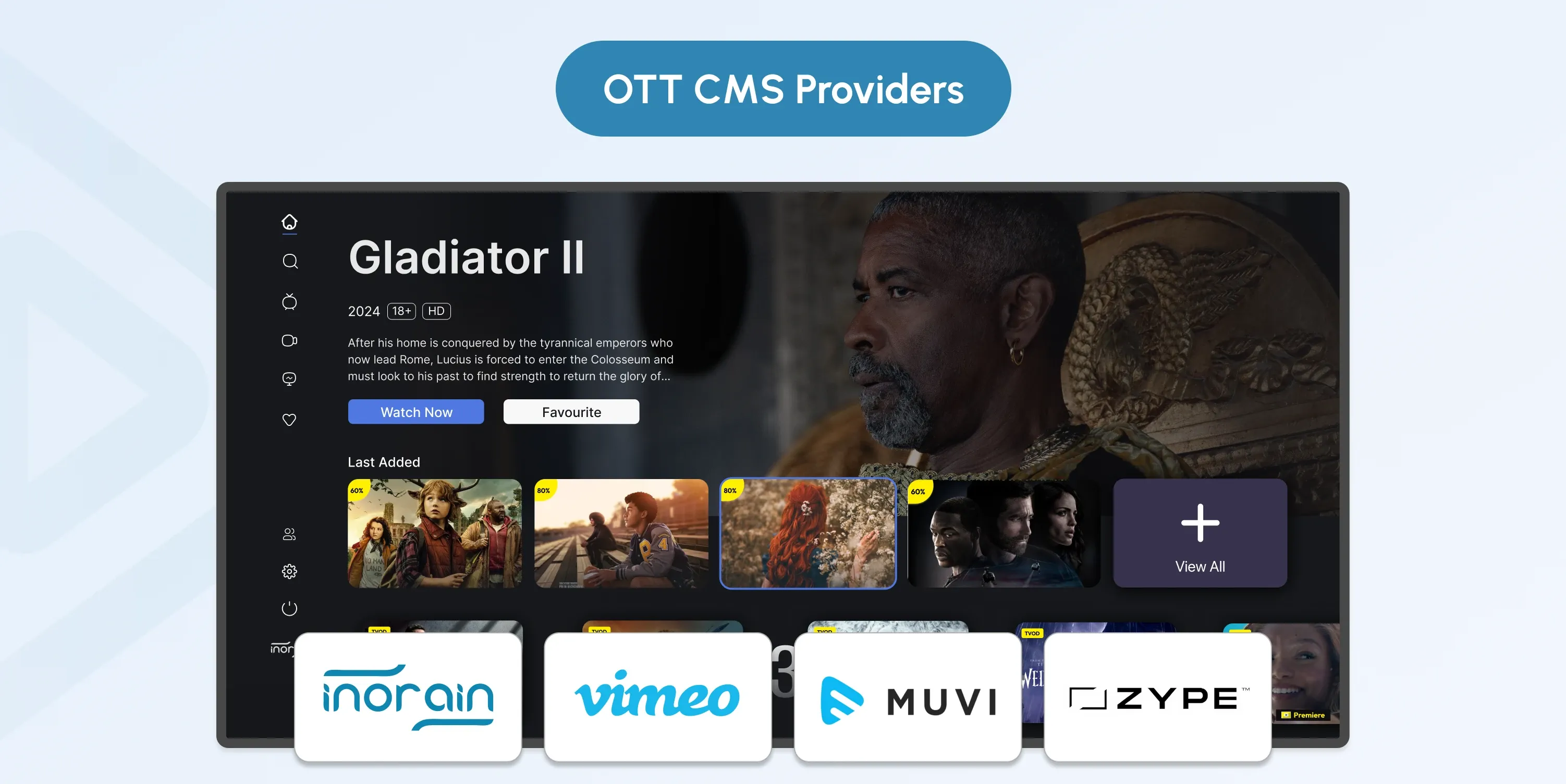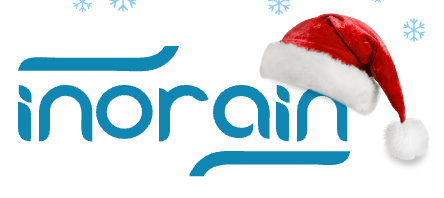
OTT CMS: Importance, Key Features, and Best Providers
If you want to properly distribute, manage, and monetize video content over several platforms, you need an OTT content management system (CMS).
To satisfy the growing need for flawless streaming experiences, an efficient OTT CMS guarantees that your content is easily distributed to your audience, quickly accessed, and well-organized.
This guide covers the importance of an OTT CMS, its key features, and the best providers available.
Key Takeaways
- An OTT CMS provides a centralized platform for managing, scheduling, and distributing video content across multiple channels, making media organization and outreach simple.
- With capabilities for multi-device and multi-platform content delivery, an OTT CMS expands your reach, optimizing accessibility and viewer engagement.
- Many OTT CMS platforms integrate with external monetization solutions, enabling diverse revenue models like subscriptions, ads, and pay-per-view, so you can maximize profitability.
- Key features like personalized recommendations, adaptive streaming quality, and seamless playback improve the user experience, boosting viewer retention and satisfaction.
What is an OTT CMS?
 An Over-the-Top (OTT) content management system (CMS) helps companies and content creators efficiently distribute, manage, and arrange their video content over several platforms and devices.
An Over-the-Top (OTT) content management system (CMS) helps companies and content creators efficiently distribute, manage, and arrange their video content over several platforms and devices.
This system is vital for any streaming service, as it ensures smooth content delivery, complete control over how videos are presented, and even performance tracking.
By integrating analytics, monetization tools, and user management, an OTT CMS enhances the entire content experience for both creators and viewers.
Key Features of an OTT CMS
 An OTT Content Management System focuses on enhancing user engagement, ensuring smooth delivery across multiple platforms, and simplifying content management. Here are the core features to keep in mind:
An OTT Content Management System focuses on enhancing user engagement, ensuring smooth delivery across multiple platforms, and simplifying content management. Here are the core features to keep in mind:
Content Organization and Classification
A strong OTT CMS allows you to easily upload, categorize, and arrange videos into playlists, libraries, or categories, helping viewers quickly find what they’re looking for. This is especially useful when managing large content libraries, as it streamlines distribution and enhances viewer satisfaction.
Multi-Device Compatibility
Audiences view content on a variety of devices, including desktops, tablets, smart TVs, and mobile phones. A high-quality OTT CMS adapts content seamlessly to various screen sizes and resolutions, ensuring a consistent and enjoyable viewing experience on any device.
Monetization Options
For companies looking to profit from content, monetization tools are crucial. A strong OTT CMS offers flexible options like pay-per-view, ad-supported streaming, and subscription-based models. This flexibility allows you to select or combine models that best suit your business strategy and audience preferences.
Analytics and Reporting
Analytics tools provide insights into viewer behavior, content performance, and overall engagement. Metrics like watch time, user retention, and geographic data help you refine your content strategy and optimize revenue streams by making informed decisions based on real data.
Security and User Management
Robust security and user management features protect your content and control access. A reliable OTT CMS includes digital rights management (DRM) and secure streaming to prevent unauthorized access and safeguard intellectual property. User management tools ensure compliance with privacy standards, providing viewers with a secure and uninterrupted experience.
These features collectively make an OTT CMS indispensable for efficient content management, audience engagement, and revenue growth in the competitive streaming landscape.
How an OTT CMS Supports Content Distribution
An OTT CMS is essential for streamlined, comprehensive content distribution across multiple platforms and devices, primarily through multi-platform delivery.
With an OTT CMS, your audience can access your content from anywhere, whether on desktops, smart TVs, tablets, or smartphones. The system automatically optimizes content by converting and resizing it for the best viewing experience on each device.
Content syndication is another major feature. An OTT CMS enables you to distribute content across partner sites, social media, and other OTT platforms, expanding your reach and engaging a broader audience. Syndication features allow targeted distribution based on audience preferences or licensing terms, ensuring content reaches specific platforms or regions effectively.
Adaptive streaming is also a crucial aspect. Using adaptive bitrate streaming, the CMS adjusts video quality to match the viewer's internet speed and device specifications. This ensures smooth playback, enhancing the overall user experience and keeping viewers engaged.
Geo-blocking and regional targeting options allow you to control content distribution by location, essential for businesses with licensing restrictions. This feature strategically allocates resources to regions with the highest potential for success, enhancing both compliance and efficiency.
Finally, integration with content delivery networks (CDNs) ensures quick and reliable content delivery. CDNs cache content closer to the viewer’s location, improving load times and reducing latency, so your audience enjoys fast, high-quality streaming anywhere in the world.
Through these powerful distribution capabilities, an OTT CMS maximizes reach, maintains quality, and enhances viewer engagement across platforms.
5 Benefits of Using an OTT CMS
An OTT content management system offers substantial advantages for broadcasters, companies focused on exceptional streaming experiences, and content providers.
1. Centralized Content Management
One primary benefit is centralized content management, which simplifies video uploading, organizing, and scheduling. With all metadata, categories, and playlists in one place, updating and expanding your content library becomes faster and more efficient.
2. Seamless Multi-Device Compatibility
An OTT CMS ensures seamless content distribution across desktops, tablets, smart TVs, and mobile devices, guaranteeing viewers a consistent and high-quality experience, regardless of the device or internet speed. By automatically adjusting the format and resolution for different screens, it significantly enhances user satisfaction.
3. Personalized Recommendations
An OTT CMS can analyze user preferences and viewing patterns to deliver tailored content recommendations, boosting viewer engagement and retention. Customizing each viewer’s experience keeps users on your platform longer and increases their likelihood of returning, raising overall satisfaction.
4. Flexible Monetization Options
An OTT CMS supports various monetization models, including ad-based (AVOD), subscription-based (SVOD), and hybrid options. This flexibility enables you to cater to diverse audience segments and maximize revenue by diversifying income streams.
5. Scalability
As your platform grows, an OTT CMS scales to accommodate increased traffic and content demands, ensuring optimal performance. It supports platform expansion, library growth, and new user influx without disruption, allowing for smooth market expansion and user experience.
With its powerful capabilities, an OTT CMS enhances the management, distribution, and monetization of streaming content, making it an ideal choice for platforms aiming to deliver exceptional and scalable streaming experiences.
OTT CMS vs. Traditional CMS
Understanding the key differences between OTT content delivery systems and traditional CMS platforms is essential, as each is tailored to different content needs.
| Feature | OTT CMS | Traditional CMS |
|---|---|---|
| Purpose and Focus | Specifically designed for managing video content, supporting interactive media, live streaming, and video-on-demand (VOD). Ensures smooth, multi-device distribution with adaptive bitrate streaming and personalized recommendations. | Primarily focused on managing text and static content, such as blogs and articles. Lacks built-in tools for dynamic video distribution and engagement. |
| User Experience | Prioritizes video consumption with interactive, immersive interfaces that enhance user engagement. Features include in-video interactivity and customizable recommendations. | Offers themes and templates suitable for text-based content. Limited support for video content, which may reduce overall engagement. |
| Monetization Options | Provides flexible monetization models tailored to video, such as subscription-based (SVOD), ad-supported (AVOD), and hybrid models (HVOD). | Typically relies on advertising and affiliate marketing for monetization. Lacks advanced revenue-generation tools specific to video content. |
| Scalability and Analytics | Built to handle high video traffic using Content Delivery Networks (CDNs) to ensure uninterrupted streaming. Includes analytics tools focused on video performance and viewer engagement. | Offers basic analytics geared toward text and image content. May struggle to scale for video-heavy distribution and provides limited insights into viewer engagement. |
4 Best OTT CMS Providers
Choosing an OTT Content Management System requires careful evaluation of suppliers with strong capabilities, catering to video content management, flawless user experience, and efficient monetizing techniques.

1. inoRain
InoRain provides scalable, feature-rich OTT solutions that empower businesses to create streaming platforms with VOD, live streaming, and customizable OTT services.
With multi-platform compatibilities, inoRain OTT enables seamless content delivery across more than 10 platforms, including mobile devices, web browsers, and smart TVs.
Key features: A centralized dashboard, real-time analytics, adaptive bitrate streaming, multi-DRM for secure content protection, and monetization options (AVOD, SVOD, TVOD)
Additional tools like Timeshift, catch-up TV, and integrated billing streamline user management and revenue strategies.
Launch Your White-Label OTT Platform
2. Vimeo OTT
Content creators wishing to launch their subscription-based streaming service often turn to Vimeo OTT.
A customizable interface and support of several monetizing techniques, including SVOD, AVOD, and TVOD , make Vimeo OTT unique. Strong community features and engagement tools enable creators to build a devoted audience and track viewer activity, supporting their loyalty.
3. Muvi
Comprising a complete OTT CMS, Muvi is designed to provide a seamless streaming experience on multiple devices. Apart from features such as configurable user interfaces and multi-device interoperability, it supports both on-demand video content and live streaming.
Muvi's platform lets users apply pay-per-view, advertising, and subscription models by including combined monetizing choices.
4. Zype
Among Zype’s characteristics are VOD, live streaming, and content distribution across several platforms. Zype shines in its API-driven design, which makes integration with existing systems and external apps simple.
The platform offers comprehensive statistics to help customers properly evaluate content performance and viewer engagement, and supports several monetization techniques, including subscriptions and advertising.
Conclusion
In the fast-paced streaming world, a powerful OTT CMS is a must-have for managing, distributing, and monetizing video content effectively. By choosing a reliable platform with robust tools, content creators can elevate viewer experiences, optimize content strategies, and drive revenue growth.
Embracing an OTT CMS sets your company apart, giving it the agility to thrive in a competitive landscape.
Ready to scale your business with a flexible, feature-rich solution? Partner with inoRain to transform your streaming potential.
FAQs
What is OTT CMS?
An OTT CMS (Over-the-Top Content Management System) is a specialized platform designed to manage, organize, and distribute video content directly over the internet. It enables content creators and broadcasters to deliver video-on-demand (VOD) and live streaming content directly to viewers across various devices and platforms.
Can an OTT CMS integrate with third-party monetization platforms?
Yes, several OTT CMS vendors include integration features with outside monetizing systems. This lets content creators take advantage of several monetizing techniques, including pay-per-view choices, subscriptions, or advertising.
Integration with existing systems helps improve the user experience, simplify payment methods, and create additional income opportunities.
How does OTT CMS handle video streaming?
OTT content delivery systems manage video streaming by combining encoder, storage, and delivery technologies. They ensure content is stored in multiple formats to maximize playback on multiple devices and across different internet speeds. OTT CMS providers also widely use content distribution networks (CDNs) to effectively distribute video content, lowering viewer buffer and latency.
Co-founder / CTO
Armen is the CTO and Co-Founder of inoRain OTT and Co-Founder of HotelSmarters, specializing in advanced streaming technologies, OTT strategy, and interactive TV systems. He builds scalable end-to-end video delivery solutions and drives technical innovation across hospitality and streaming platforms, bridging complex engineering with practical business impact.

How to Develop a Video Streaming App: Best Practices
Learn the basics of developing a modern video streaming app. This guide covers key best practices to help you build the right way from the start.

How to Make a Short Video App (2026 Complete Guide)
Learn how to build a short video app in 2026. Explore micro-drama trends, key features, monetization models, and step-by-step development insights.

OTT Advertising: Types, Best Practices, and Strategies
Over-the-top (OTT) advertising has transformed how brands connect with consumers.

